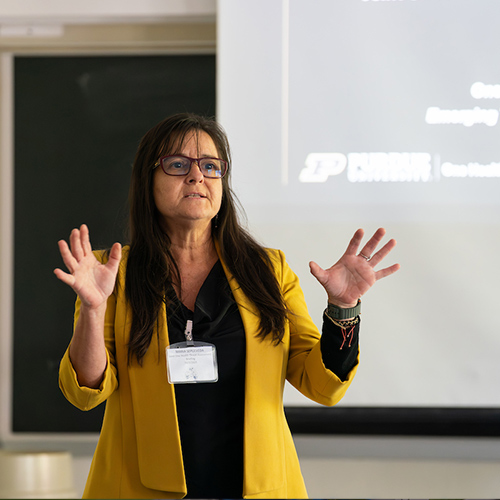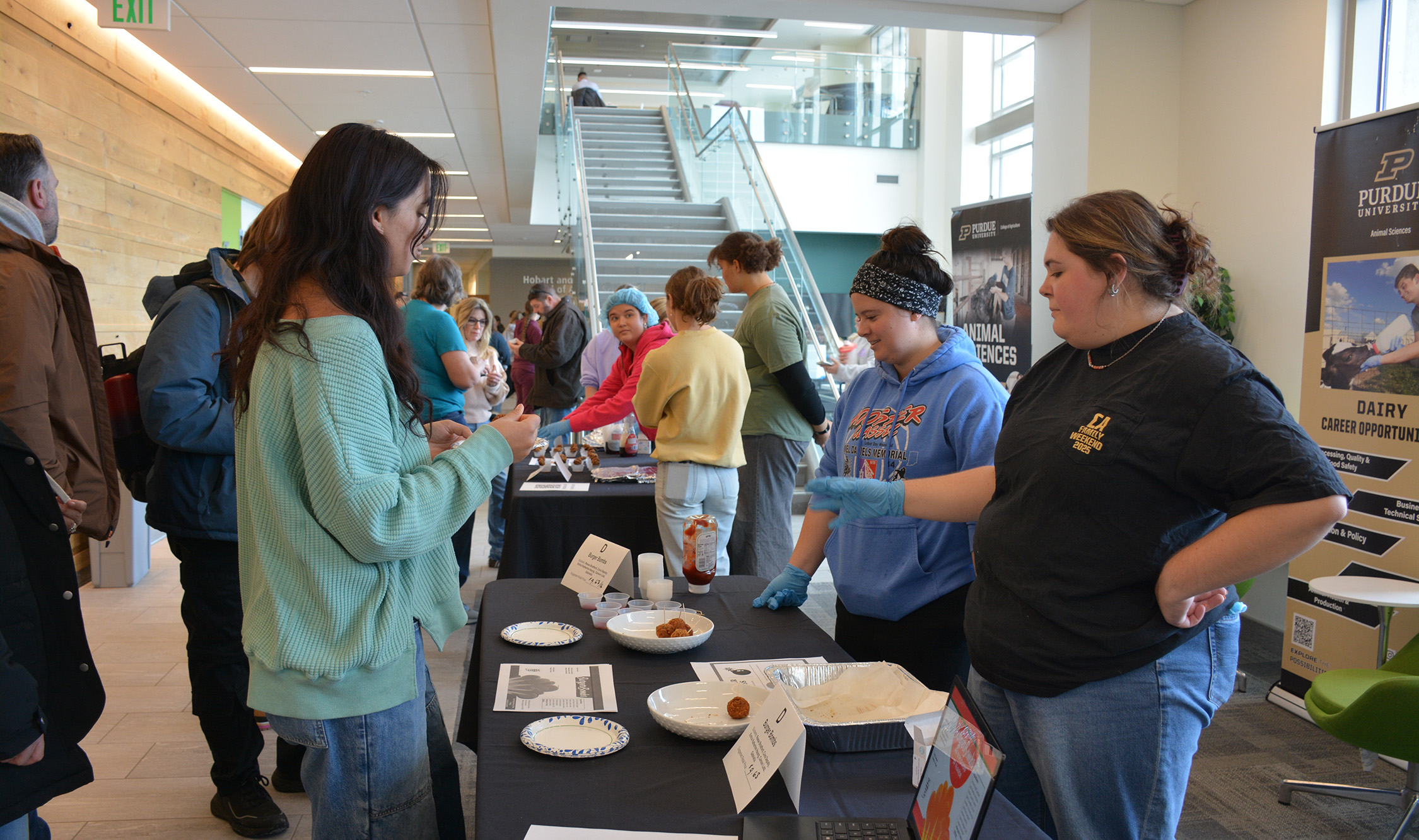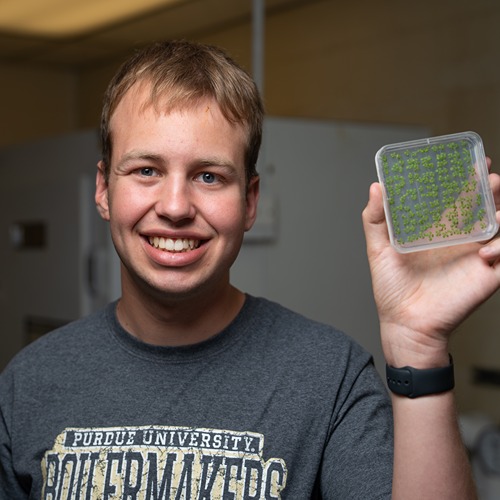Behind the Research: Emily DeaKyne
Emily DeaKyne: Project Manager for the Diverse Corn Belt Project
- Working with farmers, policy makers, land managers and other stakeholders to better understand diversification beyond corn and soybeans.
- Organizing an in-person meeting for stakeholders across three states and having a massive and enthusiastic turnout.
- Managing plans and timelines for a project with around 60 PIs, grad students, postdocs and staff.
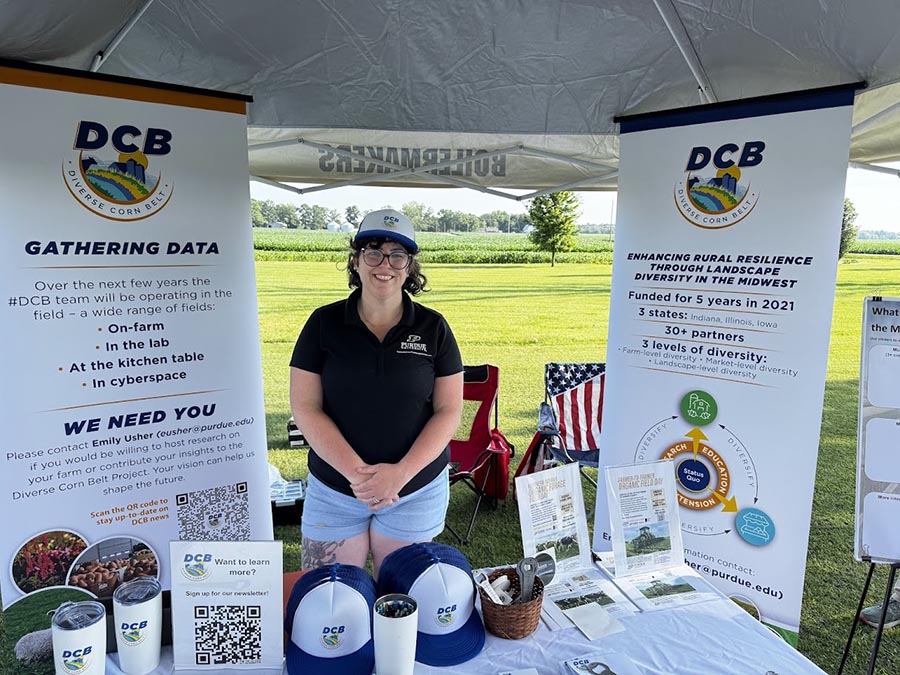
In 2015, Emily DeaKyne was a recent college graduate with a degree in applied ecology, environmental and plant biology who loved working with plants. So the job with the Bureau of Land Management seemed ideal. They gave her a truck, a list of plants, and a fold-out topo map, and sent her to drive around rural Wyoming, collecting seeds to be used for native plant seedings. The landscape was gorgeous, she says, but many days she wouldn’t see a single other person.
“That’s kind of when I realized I was a little more of a people person than the Bureau of Land Management could provide for,” she says. “I love plants, but I also like the human element.”
So DeaKyne returned to school, earning a master’s in natural resources management from the University of Wisconsin-Stevens Point. Through her research, she became familiar with the work of Linda Prokopy, then a professor of forestry and natural resources at Purdue. When an opening in Prokopy’s lab came, DeaKyne applied for it. She worked as a research associate and outreach coordinator for Prokopy from 2017 to 2021.
“Dr. Prokopy’s research focuses on the human dimension of agriculture, trying to understand the decision-making and motivations for farmers to adopt a variety of practices,” DeaKyne says of Prokopy, who is now Dean of the College of Agriculture and Life Sciences at the University of Vermont. “So for most of my time at Purdue, I was asking questions like ‘why do you adopt cover crops?’”
Then, in 2021, a new opportunity arose. Prokopy and her team were awarded a $10 million USDA grant for a project called “#DiverseCornBelt: Resilient Intensification through Diversity in Midwestern Agriculture.” The five-year project aims to make Midwestern agriculture more resilient by relying less exclusively on corn and soybeans. DeaKyne was hired as the project manager.
It’s a huge undertaking.
“People have called the Diverse Corn Belt Project ambitious, and skeptically so,” she says. “They’re correct.”
The project, which looks at Indiana, Illinois and Iowa, has some 60 team members spread across 10 universities and several government departments and nonprofits. The researchers are divided into six subteams. There’s a biophysical team working on understanding how diversification impacts things like soil health; a markets team looking at the perspectives of stakeholders along the supply chain; an education team making modules on diversity for high school and college classes; an extension team to communicate about the project’s work with the public; and a modeling team using models to understand the impact a diverse landscape would have on everything from the landscape to the economy; and a stakeholder engagement team organizing Reimagining Agricultural Diversity meeting with farmers and ag stakeholders across the Corn Belt. . Each team meets monthly.
“I’m on a lot of Zoom calls,” DeaKyne laughs.
Unsurprisingly for a project of this scope, DeaKyne’s job duties are extremely diverse. On the week we spoke, she had just returned from Springfield, Illinois, where she’d organized a final Reimagining Agricultural Diversity meeting of 60 stakeholders from across the three participating states. The following day she’d attended the Farm Progress Show in Decatur, Illinois, with more than 600 exhibitors – “kind of like going to a theme park,” she says. Then it was on to a field day at an organic farm in Wolcott, Indiana, where she learned all about their latest insect research. Next was an office day, with lots of emailing.
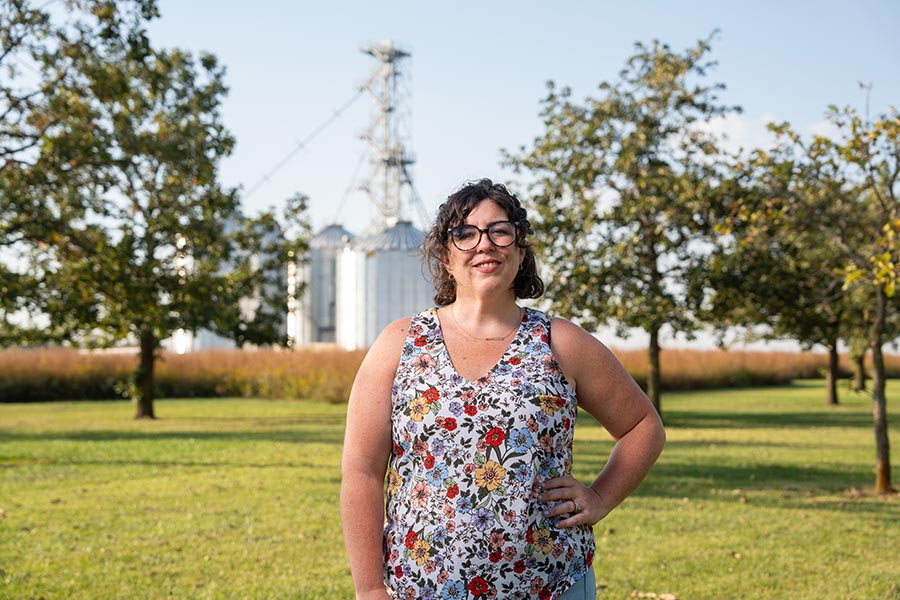 One of DeaKyne’s most important jobs is attending field days, conferences or educational seminars to help share information. This is where her “people person” side gets to come out.
One of DeaKyne’s most important jobs is attending field days, conferences or educational seminars to help share information. This is where her “people person” side gets to come out.
My favorite part of my job is having the privilege to talk to people about things they’re passionate about,” she says. “When you sit a farmer or someone involved in agriculture down and ask them questions about why they do it and how they feel about it, you’re going to get some pretty great answers.”
Many of the people DeaKyne speaks to see diversification as a way to bring vitality to their rural communities, and to bring new generations into the business. It’s traditionally been difficult to support multiple generations on the same farm, but diversified crops could increase a property’s economic value while maintaining its size. So the son or daughter could feasibly return from college and start their own families while working the land alongside their parents.
“What’s good for farm families is good for agriculture,” DeaKyne says. “There’s growing appetite for diversification in the Midwest and the Diverse Corn Belt is informing that conversation.”
The Diverse Corn Belt Project will end in 2026, but the team has secured additional funding based on their work to explore diverse markets across the Midwest.
When not working, DeaKyne likes to hang out with her husband, their dog, Daisy, and two cats, Dolly and Reba. She also indulges her own green thumb with a mini flower farm in her yard in Lafayette. She sells whatever’s growing in a tiny street-front stand, posting her offerings on Instagram at @mainstreetflora.
“In my professional life, I work with farmers, and farmers are entrepreneurs, creative thinkers, and problem-solvers,” she says. “I think they’ve rubbed off on me!”
About the Feature
Many people are involved in the remarkable range of programs, services and facilities that undergird research in the College of Agriculture. Collectively they’re integral to the college fulfilling its research mission. “Behind the Research” explores their individual roles. Each academic year, we profile six people whose work supports the College of Agriculture’s global reputation for developing innovative, multidisciplinary solutions to challenges and then putting those solutions into action.
